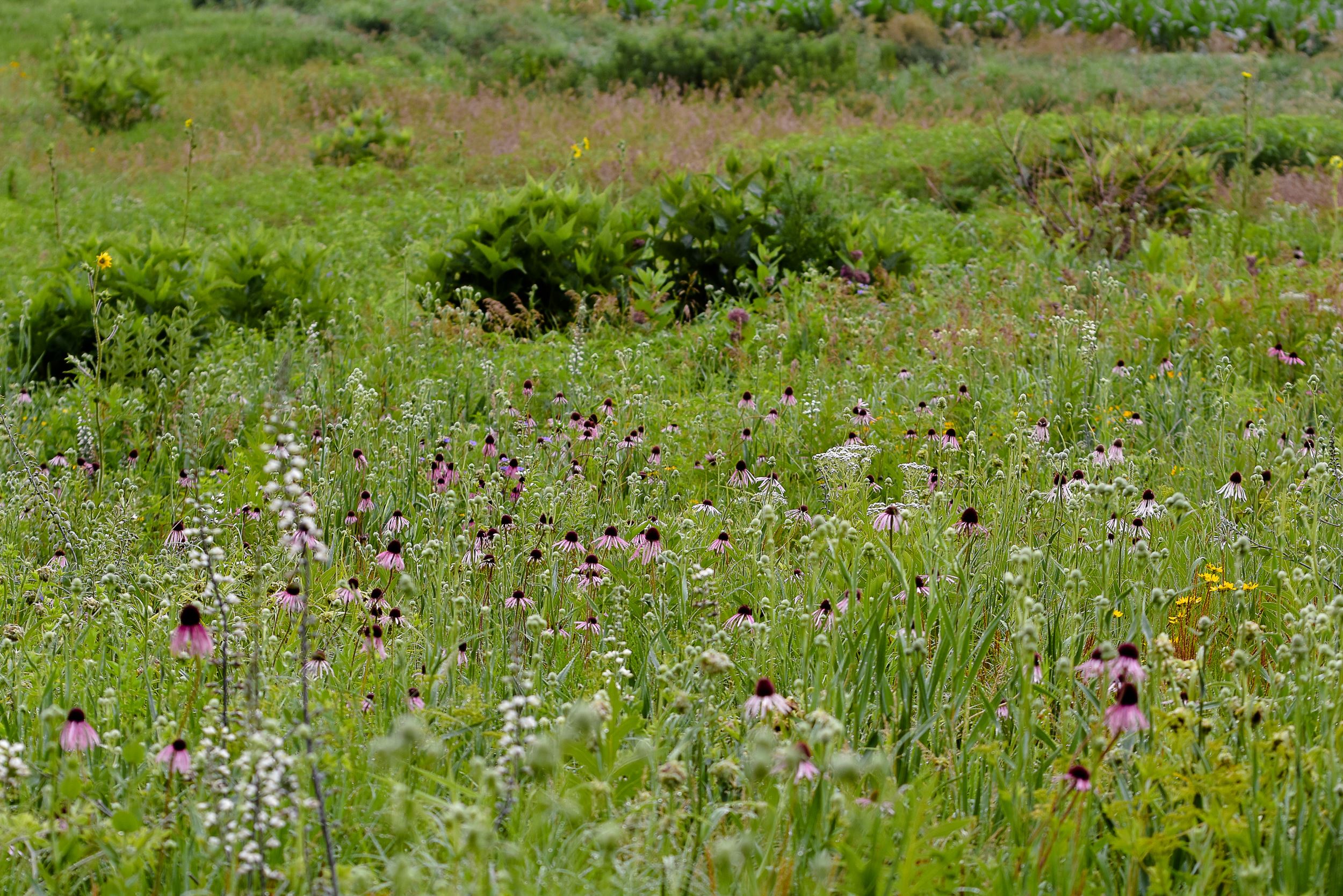Leave only Footprints, Take only Memories
By Mack Swenson on August 4, 2022 in Blog
 Lanz Heritage Area, Jasper County, Iowa. Photo by Ross Baxter/INHF
Lanz Heritage Area, Jasper County, Iowa. Photo by Ross Baxter/INHF
It’s a marvelous day to visit an Iowa park. The birds are chirping, the sun is shining and flowers are blooming. Wouldn’t it be nice to take back some of those flowers, as a way to remember this remarkable visit?
As nice as it might sound, doing so is illegal. The law, which applies to all public lands and waters in the state, might seem excessive. However, it is because these natural environments are so rare that this law exists; flowers, shrubs, and rocks are just as much a part of the state’s natural heritage as its rivers and forests and therefore deserve protection. Here, we’ll dive into a few of the reasons that Iowa restricts the removal or altering of vegetation on public lands and waters.
First, it’s important to note that there are some exceptions to this strictly worded code: “It shall be lawful to collect the fruit of all nut and berry-producing plants for [non-commercial] home use provided the collector does not damage the parent plant.” This modification also applies to mushrooms. So, although it is not lawful to remove live leaves or flowers from plants in public areas, it is lawful to take most wild edibles—as long as there isn’t a sign communicating otherwise. The land manager may restrict the harvesting of berries, nuts or mushrooms in certain areas due to their fragility, so make sure you check signs and other documentation relating to the area you intend to forage in.
Why would Iowa law restrict visitors from gathering flowers and other plant parts on public lands when these areas are meant to be enjoyed by the masses? There are a variety of conservation grounds for limiting the removal of natural features.
For instance, if visitors to a site removed a large number of wildflowers, the flowers might not have sufficient seeds remaining to repopulate the area the following year, decreasing the area’s natural value. Additionally, certain species take a long time to reach maturity or are federally endangered. Unbeknownst to the picker, removing such species could bring them closer to extinction. Since most native wildflowers won’t survive transplantation, you’re only likely to enjoy the flowers in a jar for a few days; if left in their natural habitat, wildflowers can be enjoyed by a multitude of visitors for years.
Organisms also depend on the availability of specific plant species. Some depend on a single species, so the repercussion of removing members of this species is especially high. For pollinators, wildflower removal poses the greatest threat. Besides the organisms that depend on specific plants for food, other animals utilize plants for shelter. Overall, because ecosystems are complexly interconnected, letting wildflowers and other plants be is often the best way to ensure the integrity of the entire system.
The law is designed to protect and preserve Iowa’s valuable natural wonders. The state’s natural heritage is best left in its original environment, where it can be enjoyed by all.